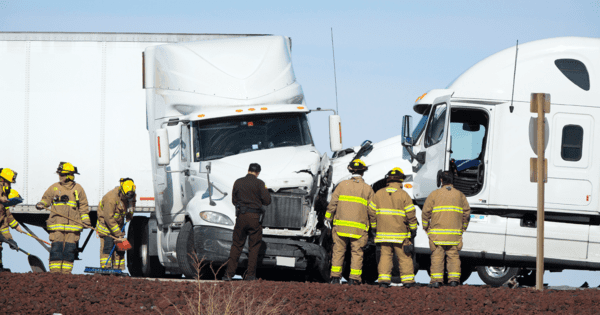Winter driving can be challenging for everyone, but it can be particularly dangerous for commercial fleet drivers. Commercial vehicles are larger and heavier than passenger vehicles, and they can be more difficult to control in icy or snowy conditions. And of course, the consequences when something goes wrong can be exponentially more serious.
Winter weather is a factor in nearly half a million crashes and more than 2,000 road deaths each year in the United States. In the United Kingdom, an average of 21% of all crashes in the winter months are linked to treacherous winter conditions. For better preparation when driving in the winter months, commercial fleet drivers can take several steps and tips to improve their winter driving safety, including:
- Prepare your vehicle. Before the start of winter, make sure your vehicle is properly maintained and equipped for winter driving. This includes checking your tires, brakes, and battery and making sure you have adequate antifreeze and windshield wiper fluid. You should also consider installing winter tires, which are designed to provide better traction on snow and ice.
- Check the weather forecast. Before you set out on a trip, check the weather forecast and road conditions. Avoid driving if possible if severe weather is expected.
- Slow down and increase your following distance. It takes longer to stop on slippery roads, so it’s important to slow down and give yourself more space between you and the vehicle in front of you.
- Avoid sudden acceleration, braking, and turning. In wintery conditions, these actions can cause your vehicle to skid. Remember, it isn’t always immediately obvious when the road condition makes skidding more likely.
- On that note, be aware of black ice. Black ice is difficult to see, so it’s important to be especially cautious when driving in areas where it is likely to form, such as bridges and overpasses.
- If you do start to skid, take your foot off the gas and steer in the direction of the skid. Don’t brake, as this can make the skid worse.
In addition to these winter driving safety tips, here are a few specific things worth looking into as well.
- Be aware of your load. The weight of your load can affect your vehicle’s handling and braking in winter conditions. Be sure to distribute your load evenly and avoid overloading your vehicle.
- Use a lower gear when driving in snow or ice. This will help you to maintain traction and control.
- If you get stuck in snow, don’t keep spinning your wheels. This will only dig your vehicle in deeper. Instead, try to rock your vehicle back and forth to free it.
Fleet driver safety
The tips above are important. However, it is vital that businesses and fleet managers also play their role in reducing winter accidents by equipping drivers with the tools they need to stay safe on the road. Fleet safety management systems like CameraMatics provide you with all-in-one solutions capable of improving visibility, real-time monitoring, incident recording, driver training, and alerts, as well as enhancing fleet efficiency.
Winter roads can be highly unpredictable and dangerous, especially for large commercial fleet vehicles. The weight and size of these vehicles can make them more difficult to control in slippery conditions, and their cargo can shift and impact their handling. That’s why it’s so important for fleet drivers to take extra precautions when driving in winter weather. Get in touch with us to explore safety solutions for your commercial fleet.
We hope these winter driving tips will help you prepare for and stay safe while driving this winter.







